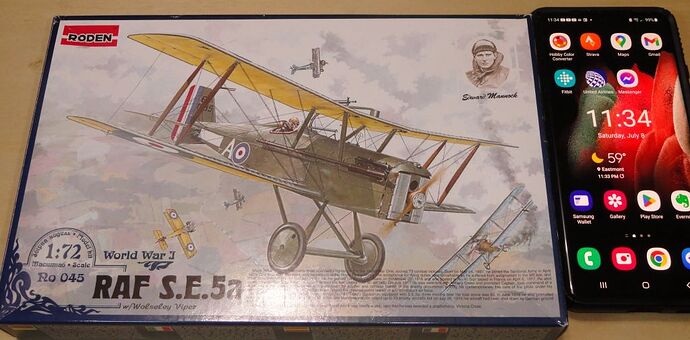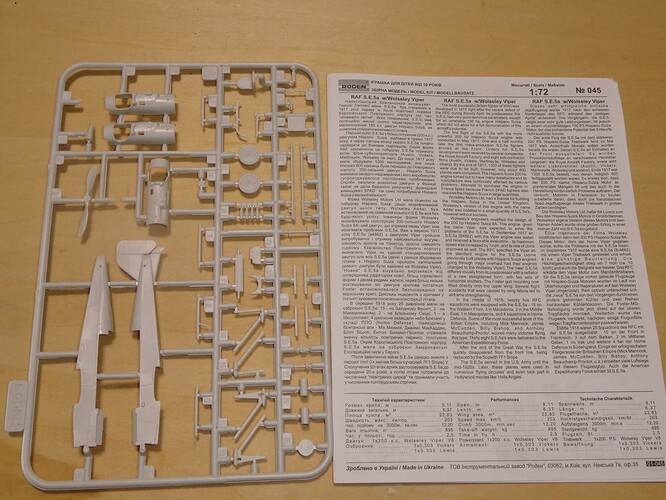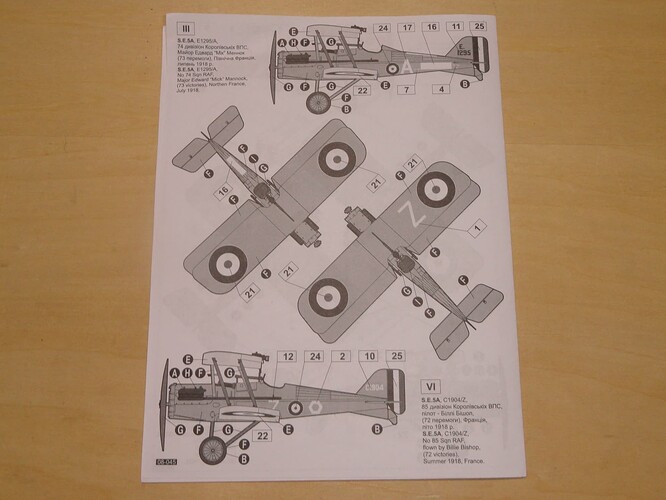Not a big kit but a lot to do, so I’m going to try and capture it all in a blog. It worked pretty good to keep me on track when I built a 1/72 SPAD XII last year. So, I’m gonna try it again to keep me honest. Here’s what I’m starting with:
My plan is to do Billie Bishop’s ride.
Part of my plan is to try a new rigging method. In the past I’ve drilled all the holes for the lines in the wings and fuselage and some blind holes in the top wing, then assemble everything except the top wing. I superglue lengths of transparent thread in the top wing holes. I glue the top wing in place then pull all the lines, tension them, super glue in place, trim and touch up the paint. This time I was going to predrill all the holes, assemble, paint, and then try to route the lines thru the wings and fuselage, glue the top wing lines. After the top wing cures, I’ll pull the lines taut, superglue the ends, trim and touch up.
I was also going to try this assembly jig from one of our NWSM modelers, Jack Mathews, that was featured on Model Paint Solutions. A Brilliantly Simple Biplane Assembly Jig. I’ve already made the jig parts.
The Roden kit is way more complicated than the Revell SPAD. Where the SPAD had close to 20 parts, this one has over 40. Revell had like 3 assembly steps, Roden has 11. Plus, it has a more complex decal sheet including cockpit gauges and a unique set of decals for the little windows over the pulleys controlling the ailerons and elevators. So, this one is going to take a lot more attention and focus. Another reason to do a detailed blog.
But maybe I’m overthinking this whole process. I spent 2 nights trying to organize the painting and assembly steps to make sure I didn’t miss anything or get to an assembly step and find out the part wasn’t painted. There’s almost 80 lines in this list, and I’m sure I’ve forgotten something.
I am worried about doing the rigging. I’ve gone in search of rigging plans for the S.E.5a and haven’t found much in the way of good ones. What I did find was a set of photoetch rigging for the kit. I went ahead and ordered it since it might solve the twin wires problem that I was going to ignore.



